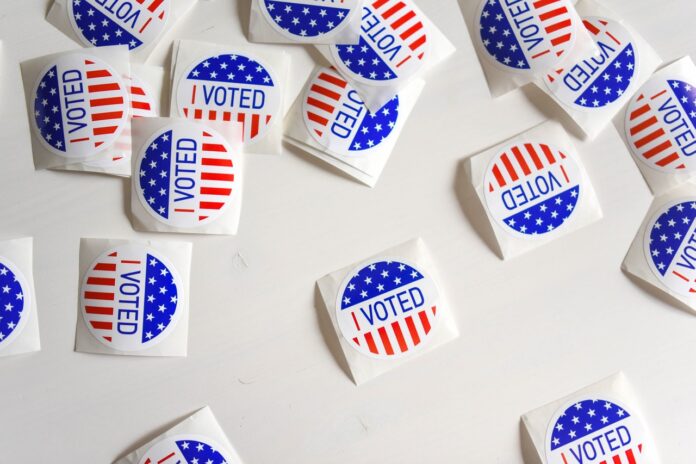Photo from Pexels.com by Elements5 Digital
By SUNITA SOHRABJI/EMS Contributing Editor
White voters, who overwhelmingly chose Donald Trump in his re-election bid, say they feel disenfranchised in a new America which prioritizes other races over their own.
According to exit poll data, three out of five White voters voted for Trump, baffling pollsters who believed the Administration’s record during Trump’s tenure would handily oust him from office. Almost 45 percent of college educated White women also voted for Trump, according to exit poll data.
In total, 74 million people voted for Trump, who, on Dec. 12, lost his re-election bid after the electoral college declared a win for Democratic contender Joe Biden, who won more than 81 million votes.
Arlie Hochschild, professor of sociology at UC Berkeley, has surveyed the Trump landscape for the past five years, ever since the businessman announced his bid for office on June 16, 2015, descending a golden escalator at Trump Towers in Manhattan.
The renowned sociologist spoke of her current research with blue collar workers in Appalachia, a very low-income, primarily White rural area in Eastern Kentucky. The coal-mining industry, which provides the majority of jobs in the region, is in deep decline as the U.S. moves towards greener energy sources.
At a Dec. 11 briefing organized by Ethnic Media Services, Hochschild said the stereotype of a Trump voter is the guy with the red Make America Great Again, pumping his fist in the air. Other images that come to her mind include Mark and Patricia McCloskey of St. Louis, Missouri, who brandished guns outside their home in June as Black Lives Matters protesters marched by; the McCloskeys went on to speak at the Republican National Convention.
But in Appalachia, a different sort of Trump supporter emerges: White people who believe they are a minority in their own country as they watch other ethnic groups eclipse them economically.
“They actually feel that life is rigged against them,” said Hochschild, noting that these voters get their picture of reality from Fox News, and CNN or MSNBC on rare occasions.
“They see that people of color are newscasters. They see Black football stars and basketball stars getting multi-million dollar deals to advertise stuff. And they think ‘Wow they’re millionaires or billionaires. Gosh. Those Blacks are really getting ahead.’”
“There’s a sense of being left out,” she said, adding: “They feel colonized by liberal culture, which says Whites are bad: they are racist. And men are bad: they are rapists.”
“They feel like a minority group that is in decline, and they feel that people of color are rising while they are declining,” said Hochschild. She noted the anomaly: the economics of Black and Latinx households have largely been on a downward trajectory over the past decade.
In comparison to White voters, majorities of Black, Latino, Asian and Native American voters rejected Trump by large margins and turned out in force, helping defeat the incumbent President.
Davin Phoenix, assistant professor of political science at UC Irvine, sees Trump´s persistent support among most Whites as a “doubling down” effect of anger that the President has used to keep his base active.
“There´s this expectation that is not founded that maybe White Americans, specifically White women, would move away from Trump,” Phoenix said. “But what did Trump very effectively do throughout those four years? Continue to engender and activate that sense of anger.”
“Trump has been normalized and kind of the ethos or the mythos of Trump supporters has been normalized,” he said, noting that the President not only polarized the country on race and ethnicity, but also on gender, religion, and socio-economic status.
The dividing lines also served to alienate Democratic factions from each other, said Phoenix, author of The Anger Gap: How Race Shapes Emotion in Politics.
Although this election saw the highest turnout in a presidential election in the last 120 years, almost half of all eligible voters — 85 million people — did not turn out for the critical election. Thus, Trump received just 31 percent of all possible votes, while Biden amassed 33 percent, noted Mindy Romero, founder and director of the Center for Inclusive Democracy at the University of Southern California.
Those who voted were not reflective of the polity at large, said Romero, noting that voters who do turn out tend to be older, wealthier, and White, and more educated. “Whites are always over-represented amongst voters,” said Romero.
Even in California, which prides itself on being unabashedly Blue, Trump amassed 5.5 million votes, the most of any Republican Presidential candidate ever. Overall, Trump received 47 percent of the White vote in California, while Biden received 51 percent, a scant four percent margin in a very progressive state, noted Romero.
“Many of those that opposed Trump in this election cannot fathom why anyone would vote for somebody who is trafficking in racial tropes,” said Romero, adding however that Trump supporters do not see him or his actions as racist. “His rhetoric is carefully structured. He leaves open huge pathways for people to interpret his statements.”
White voters and BIPOC voters are looking at the country’s landscape from contrasting lenses, said the researcher. Whites overall less likely to recognize the existence of individual and institutional forms of racism, she said, pointing to the polarized opinions surrounding the death of Minnesota resident George Floyd, a Black man who was killed by White police officers.
Romero holds an optimistic vision for the future of America. “We must all commit to fight for a better America, for an accessible and truly inclusive democracy.”
“Even though Biden won, we’re still faced with an incredibly underrepresented or non-represented electorate,” said Romero.
AsAmNews has Asian America in its heart. We’re an all-volunteer effort of dedicated staff and interns. Check out our new Instagram account. Go to our Twitter feed and Facebook page for more content. Please consider interning, joining our staff, or submitting a story.

